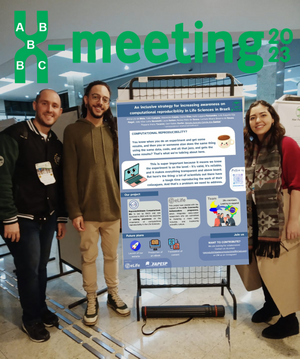Central to any scientists' curriculum vitae and career progression is a list of academic publications. Manuscripts caught in a cycle of submit-revise-resubmit to a journal can’t yet be used to advance their career. This delay disproportionately affects early career researchers, who are still working to build a record of achievements. Including a CV line for a manuscript prior to publication is normal, but it doesn’t help a hiring committee examine the work itself. One way to circumvent this problem is by preprinting.
Preprinting — uploading a completed manuscript to a public server — is a common practice in many research disciplines. Depositing a paper outside of an academic journal allows researchers to control when their data goes public so they can promote their results much sooner. Not only that, but studies show that the preprints which go on to be published in a journal have increased readership and are cited more often. Preprinting ensures a paper will be open access and available for anyone to read, no matter what the policy of the journal where the final version resides. Broad accessibility can lead to rapid feedback from a much wider community, especially when paired with preprint review services such as PREreview or preLights. Popularity of preprinting has grown rapidly in recent years, with the preprint server for biology-related research,"bioRxiv", recently surpassing 200,000 cumulative submissions since 2017. Globally, over 50 preprint servers exist that cover a wide range of disciplines, and conversations about the practice have even reached mainstream media outlets.
But who makes the decision to preprint a manuscript? What happens when co-authors disagree about the practice? As an early career researcher, how can you effectively navigate the process of preprinting your paper?
As a first step, have a conversation with your advisor or co-authors about preprinting your next paper. If you are unsure about where they stand regarding preprints, you can start by asking about their views on preprinting.
Here are a few things to consider:
- What are the requirements from your university or funders for communicating the work? Do they encourage preprints?
- Provide examples of other researchers in your field who have preprinted
- Offer to provide additional resources or to seek further input about the use of preprints
Not everything needs to be settled in one conversation, but all authors must be on board to preprint a manuscript. Have these discussions early on so there is time to address concerns; If co-authors do push back, there are a variety of resources to provide that may assuage their concerns, such as the ASAPBio FAQ.
One common concern among preprinting skeptics is the risk of scooping - another competing group will see the preprint and rush to publish their results in a journal before the preprint authors have an opportunity to do so themselves. Interestingly, there is no evidence that the prevalence of scooping in preprints is higher than in the context of journal publications. In fact, researchers have used their preprints as an opportunity to initiate collaborations with other groups in the field or to coordinate the publication of their work together, thereby avoiding concerns about priority claims. As a recent example, Dr. Josh Hardy discussed how they got in touch with the authors of a preprint related to their work upon seeing the manuscript. The two groups coordinated the journal publication of their respective papers, which ended up appearing in the same journal.
There are a few important things to consider once you have the go-ahead to preprint.
- Server: Think carefully about your audience and what server will best reach the targeted audience. If you plan to submit the manuscript to a journal, familiarize yourself with the journal’s editorial policies about preprints. Some journals specify the preprint servers that they accept for preprint deposition.
- License: It is also important to think about the license you will apply to the preprint. There are several options - from no license (i.e., meaning you do not give default permission to reuse the work) to a range of Creative Commons licenses which designate the type of uses allowed.
- Format: In general, preprint servers are format agnostic, meaning they accept a single file of your manuscript in any format (for example, a single PDF file in the formatting style of the journal of your choice!) and then authorship information. However, some journals work with preprint servers to allow for direct submission of your manuscript to a journal after posting to the preprint server. You may only need to click one button for preprint and journal submission!
Many researchers are still wary of preprinting, and it is understandable that other authors may have concerns or may need additional time to consider it. As early career researchers, we rarely have final say over the papers we write. Offer to continue the conversation another time and suggest that it's worth keeping an eye on the latest preprints coming out in your field. You may also suggest you revisit the option of preprinting for another paper where they view the stakes as less high. Last but not least, reassure them that preprinting is an opportunity to expand the reach of your manuscript, ensure it is open access, and avoid the delays inherent to traditional publication.
For a more detailed guide on preprints, their history, the current status of adoption, and how exactly you can join the preprinting revolution, check out this recent preprint, “A Guide to Preprinting for Early Career Researchers,”.
Link to the preprint: Ettinger, Cassandra L., Madhumala K. Sadanandappa, Kivanc Görgülü, Karen Coghlan, Kenneth K. Hallenbeck, and Iratxe Puebla. 2022. “A Guide to Preprinting for Early Career Researchers.” OSF Preprints. January 4. doi:10.31219/osf.io/e59tk
Cover image by KoalaParkLaundromat on Pixabay
About the author: Ken Hallenbeck earned a PhD in pharmaceutical sciences from the University of California, San Francisco, and is now a biotechnology researcher. He serves on the board of directors of ReImagine Science and is the life sciences lead at TerraPrime. Connect with Ken on Twitter.
We welcome comments, questions and feedback. Please contact us at ecrlife [dot] editors [at] gmail [dot] com.
Would you like to share your own story, insight or opinion? Pitch us here.
Follow us on Twitter or LinkedIn to stay up to speed with our latest news and blog post releases.







